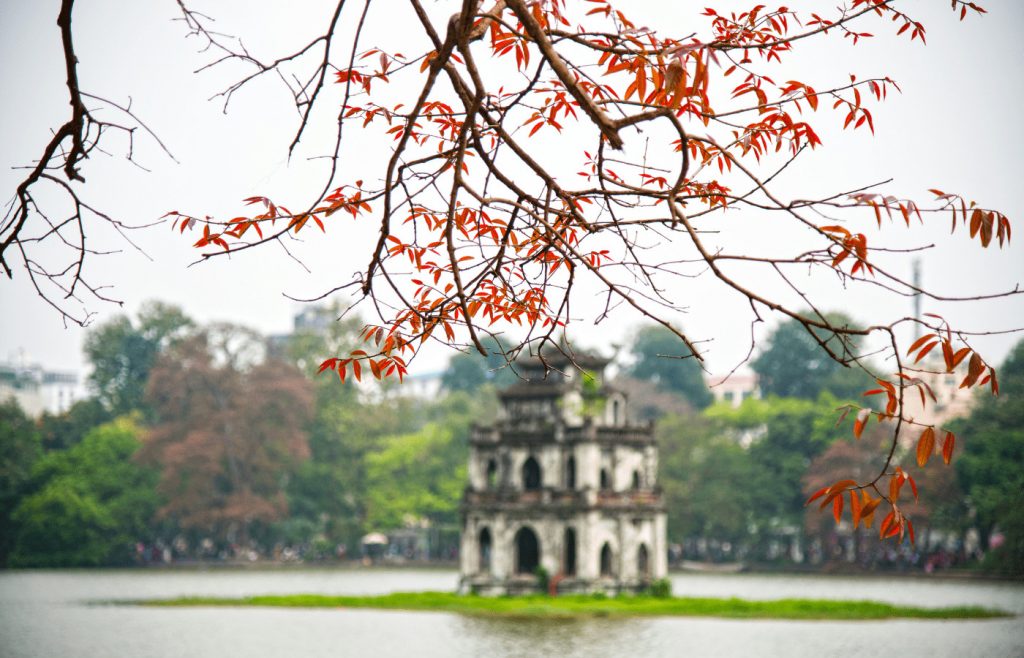Hanoi is the capital city of Vietnam and one of the country’s most important cultural, historical, and economic centers. Located in the northern part of Vietnam, Hanoi has a rich history that dates back over a thousand years. It serves as the political hub of the country, housing the government offices, embassies, and many important institutions.
Hanoi city introduction | About Ha Noi: Map, postal codes, Tourist, History Update 07/15/2025
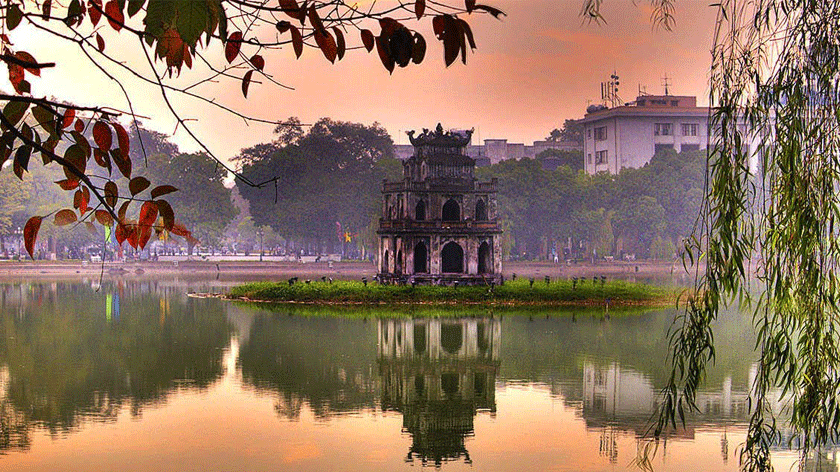
The city is known for its unique blend of traditional Vietnamese culture and French colonial influences, which can be seen in its architecture, cuisine, and lifestyle.
Hanoi’s Old Quarter is a popular area with narrow streets and bustling markets, offering a glimpse into the city’s past. The area is also home to many temples, pagodas, and historical landmarks, such as the Temple of Literature, Hoan Kiem Lake, and the iconic One Pillar Pagoda.
Hanoi is renowned for its vibrant street food scene, with numerous food stalls and local eateries offering a variety of delicious dishes. Pho, a traditional Vietnamese noodle soup, is a must-try when visiting Hanoi. The city also has a thriving café culture, with numerous coffee shops serving aromatic Vietnamese coffee.
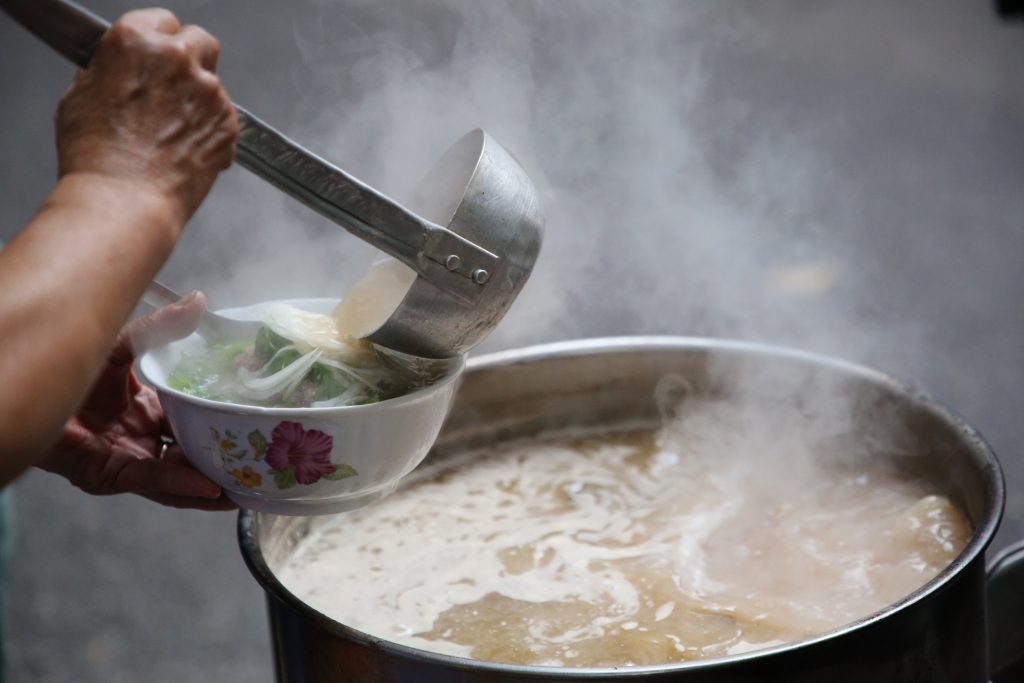
In addition to its cultural attractions, Hanoi is a gateway to the natural beauty of northern Vietnam. It is located near stunning landscapes such as Halong Bay, a UNESCO World Heritage site known for its emerald waters and towering limestone islands.
Hanoi has a distinct four-season climate, with hot summers, cool winters, and a moderate amount of rainfall. The city is well-connected both domestically and internationally, with Noi Bai International Airport serving as the main gateway for air travel.
Overall, Hanoi offers a unique blend of history, culture, and natural beauty, making it a fascinating destination for travelers interested in exploring Vietnam.
In this comprehensive guide, we invite you to embark on a virtual journey through the enchanting wonders of Hanoi. Discover its rich cultural heritage, architectural marvels, vibrant culinary scene, and immerse yourself in the warmth and hospitality of the local people.
Map of Hanoi city on Google Map
Google Maps opens the gateway to exploring the enchanting city of Hanoi, Vietnam’s vibrant capital. Nestled along the banks of the Red River, Hanoi is a city of rich history, captivating culture, and bustling urban life. In this article, we invite you on a virtual journey through Hanoi using Google Maps, where we’ll uncover its iconic landmarks, vibrant neighborhoods, and hidden gems.
Google Maps offers a glimpse into the wonders of Hanoi, a city that seamlessly blends its ancient heritage with modernity. From the serene beauty of Hoan Kiem Lake to the historical charm of the Old Quarter, and the cultural significance of the Temple of Literature and Ho Chi Minh Mausoleum, Hanoi presents a captivating tapestry of experiences.
Through the lens of Google Maps, you can embark on a virtual adventure, unraveling the mysteries and allure of Vietnam’s capital city, Hanoi.
Names
Hanoi is the capital of Vietnam, is very beautiful. The name “Hanoi” has its roots in the Vietnamese language. It is derived from two words: “Ha” and “Noi.” “Ha” means river, and “Noi” means inside or interior. Therefore, Hanoi can be translated to “Inside the River” or “River Interior.”
The name Hanoi reflects the city’s geographical location. The city is situated on the right bank of the Red River, which flows through the northern part of Vietnam. The area where Hanoi is located is surrounded by rivers, lakes, and streams, which contribute to the city’s scenic beauty and agricultural productivity.
The name Hanoi has historical significance as well. It has been used for centuries and has survived various changes in the city’s history. Hanoi has been the capital city of Vietnam for most of its history, except for a few periods when other cities held that position. The name Hanoi has become synonymous with the seat of political power in Vietnam.
In summary, Hanoi is called Hanoi because of its location near the Red River and its historical role as the capital city of Vietnam. The name reflects the city’s connection to the river and its position as an important political and cultural center.
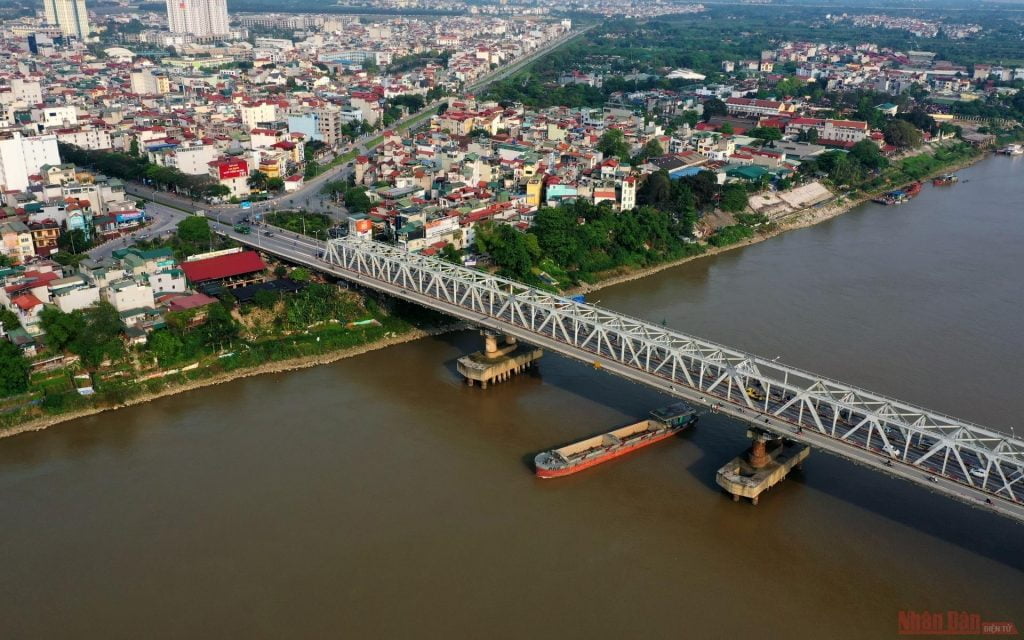
Hanoi history Update 07/15/2025
The history of Hanoi spans over a thousand years and is rich with cultural, political, and historical significance. Here is an overview of the key periods and events in the history of Hanoi:
- Ancient and Medieval Periods: Hanoi’s history can be traced back to the prehistoric times when the area was inhabited by various indigenous tribes. The city’s origins as a settlement date back to the 3rd century BC when it was known as Thang Long, meaning “Rising Dragon.”In the 11th century, during the Ly Dynasty, Thang Long became the capital city of Vietnam. It served as the political and cultural center of the country for several centuries. During this period, the city witnessed significant growth, with the construction of palaces, temples, and other important structures.
- French Colonial Rule: In the late 19th century, Hanoi came under French colonial rule as part of French Indochina. The French transformed the city’s architecture and urban layout, introducing European-style buildings, wide boulevards, and public squares. The city became known as Hanoi during this period.Hanoi served as the administrative center of French Indochina, and many French institutions, such as schools, hospitals, and government buildings, were established. The influence of French culture can still be seen in Hanoi’s architecture and cuisine.
- Modern Era and the Vietnam War: Hanoi played a crucial role during the Vietnam War (1955-1975) as the capital of North Vietnam. The city experienced extensive bombing campaigns by the United States, but despite the destruction, Hanoi remained resilient.In 1976, following the end of the war, Vietnam was reunified, and Hanoi continued as the capital of the unified Socialist Republic of Vietnam. The post-war period saw the city’s reconstruction and development as the country focused on rebuilding and modernization.
- Contemporary Hanoi: In recent decades, Hanoi has experienced rapid urbanization and economic growth. The city has undergone significant development with the construction of modern infrastructure, high-rise buildings, and an expanding transportation network.Today, Hanoi remains the political and cultural capital of Vietnam. It is home to government institutions, museums, universities, and a vibrant arts and entertainment scene. The city attracts both domestic and international tourists, who come to explore its historical sites, immerse themselves in its rich culture, and enjoy its culinary delights.
Throughout its history, Hanoi has preserved its traditional charm while embracing modernity. The city’s historical legacy, cultural heritage, and dynamic atmosphere make it a captivating destination for those interested in Vietnam’s past and present.
Hanoi Geography
Hanoi is located in the northern part of Vietnam and serves as the capital city of the country. It is situated on the right bank of the Red River, which flows through the city and plays a significant role in its geography and development.
The city of Hanoi covers an area of approximately 3,328 square kilometers (1,285 square miles). It is surrounded by the Red River Delta, a fertile region known for its agricultural productivity. The delta is characterized by a network of rivers, lakes, and channels, which contribute to the city’s scenic beauty and provide water for irrigation.
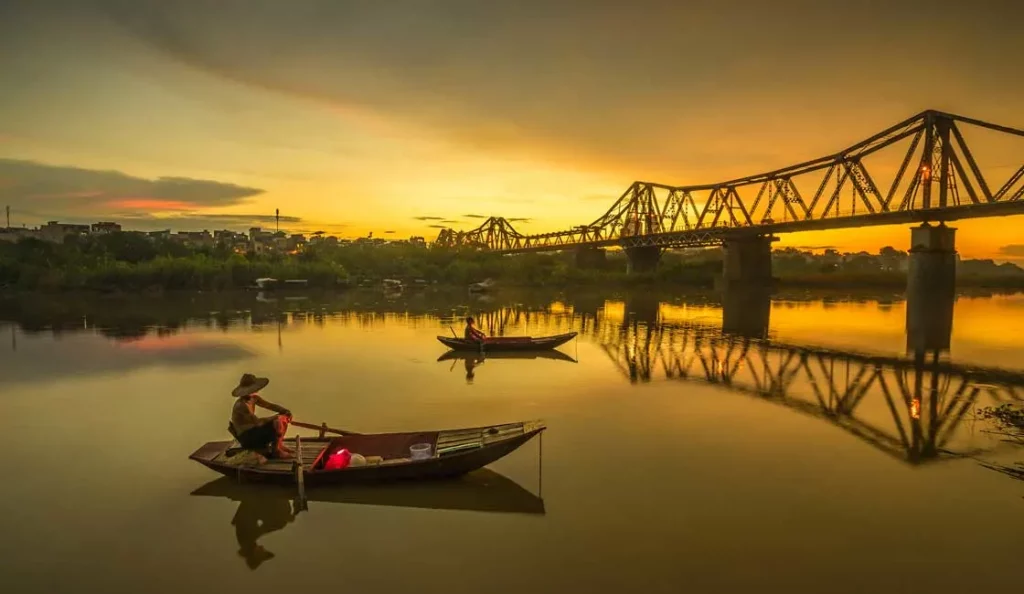
Hanoi is geographically diverse, featuring a mix of plains, hills, and lakes. The city is nestled between a ring of mountains, including the Tam Dao, Ba Vi, and Soc Son ranges, which add to its picturesque landscape. These mountains not only provide natural beauty but also offer opportunities for outdoor activities and exploration.
One of the prominent features of Hanoi is its numerous lakes. The most famous lake is Hoan Kiem Lake, located in the heart of the city. It is a popular recreational spot and a symbol of Hanoi. Other notable lakes include West Lake (Ho Tay) and Truc Bach Lake, which contribute to the city’s scenic charm and offer recreational activities such as boating and fishing.
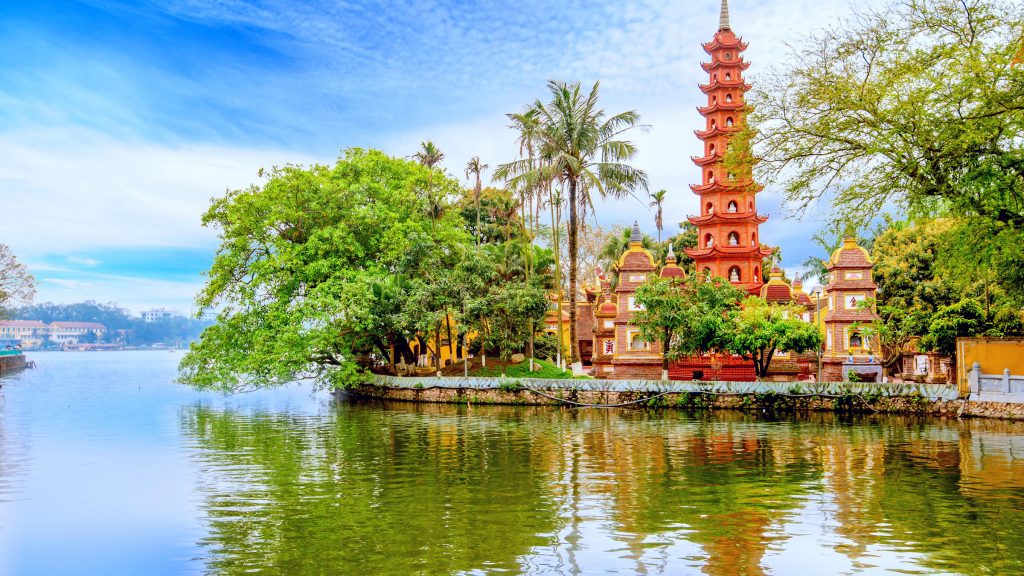
Hanoi experiences a subtropical climate with four distinct seasons. Summers (from May to August) are hot and humid, with temperatures often reaching above 30 degrees Celsius (86 degrees Fahrenheit). Winters (from December to February) are relatively cool and can be accompanied by light rainfall. Spring and autumn are transitional seasons, characterized by milder temperatures and pleasant weather.
The city is well-connected both domestically and internationally. Noi Bai International Airport, located about 45 kilometers (28 miles) from the city center, serves as the main gateway for air travel. Hanoi is also connected to other parts of Vietnam through an extensive network of roads, railways, and waterways.
In summary, Hanoi’s geography is shaped by its location in the Red River Delta, surrounded by mountains, rivers, and lakes. Its diverse landscape, along with its favorable climate, adds to the city’s attractiveness and provides a beautiful backdrop for its cultural and historical heritage.
Hanoi is divided into several administrative districts, each with its own distinct characteristics. The central area of the city, including the historic Old Quarter, is known for its narrow streets, ancient buildings, and bustling markets. This part of Hanoi showcases the city’s rich heritage and traditional charm.
To the west of the city center lies West Lake (Ho Tay), the largest lake in Hanoi. Surrounding the lake are upscale residential areas, hotels, and restaurants. West Lake offers a peaceful retreat from the city’s hustle and bustle, with scenic views and recreational activities available.
The Red River plays a crucial role in Hanoi’s geography and provides a lifeline for the city. It not only serves as a transportation route but also supports agricultural activities in the surrounding areas. The river delta is known for its fertile soil, making it an important agricultural region for rice cultivation and other crops.
Hanoi’s geography also contributes to its unique cuisine. The city’s proximity to the Red River and its delta ensures a plentiful supply of fresh seafood, which is reflected in its local dishes. The fertile land surrounding Hanoi produces an abundance of vegetables, fruits, and herbs, enhancing the flavors of the city’s culinary offerings.
Furthermore, Hanoi’s geographical location makes it a gateway to explore the natural beauty of northern Vietnam. The city serves as a convenient starting point for visiting popular destinations such as Halong Bay, Ninh Binh, and Sapa. These places are known for their breathtaking landscapes, limestone karsts, and ethnic minority cultures.
Overall, Hanoi’s geography encompasses a diverse mix of rivers, lakes, mountains, and plains. The city’s location in the Red River Delta, surrounded by natural beauty, influences its climate, cultural heritage, and agricultural productivity. Whether exploring its historic sites, enjoying its scenic lakes, or venturing into the surrounding countryside, Hanoi offers a captivating experience shaped by its unique geographical features.
Administrative divisions
Hanoi is divided into several administrative divisions, including districts, towns, and rural districts. As of my knowledge cutoff in September 2021, Hanoi is organized into 12 urban districts, 1 town, and 17 rural districts.
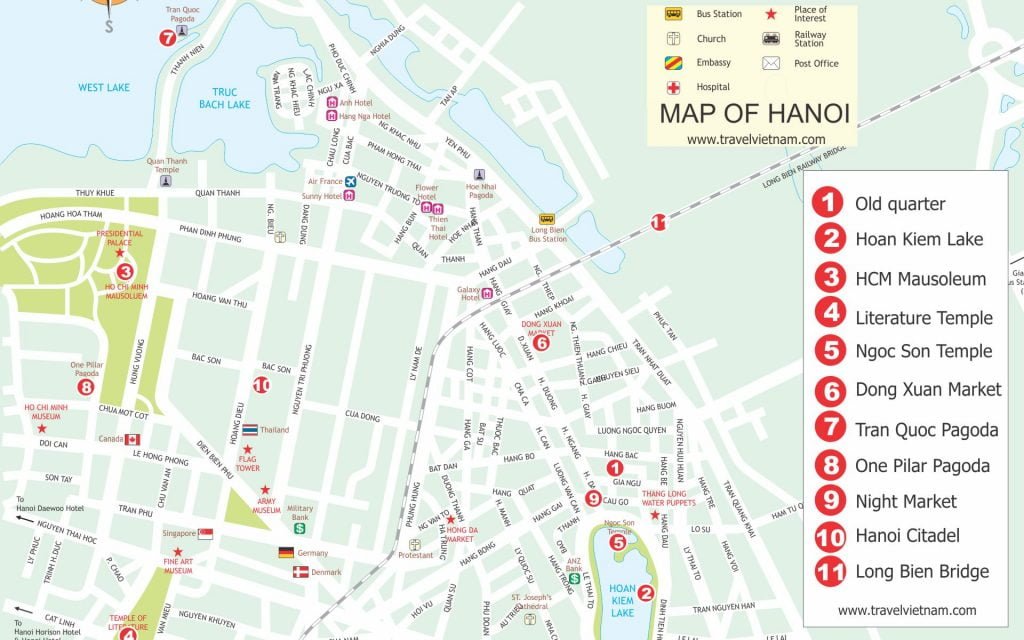
However, please note that administrative divisions can change over time, and there may have been updates since then. Here is a general overview of the administrative divisions of Hanoi:
- Urban Districts:
- Ba Dinh District
- Hoan Kiem District
- Hai Ba Trung District
- Dong Da District
- Tay Ho District
- Cau Giay District
- Thanh Xuan District
- Long Bien District
- Hoang Mai District
- Ha Dong District
- Nam Tu Liem District
- Bac Tu Liem District
- Town:
- Son Tay Town: Located to the northwest of Hanoi, Son Tay is an administrative unit separate from the urban districts. It has its own local government and serves as a center for commerce and tourism.
- Rural Districts:
- Ba Vi District
- Chuong My District
- Dan Phuong District
- Dong Anh District
- Gia Lam District
- Hoai Duc District
- Me Linh District
- My Duc District
- Phu Xuyen District
- Phuc Tho District
- Quoc Oai District
- Soc Son District
- Thach That District
- Thanh Oai District
- Thanh Tri District
- Thuong Tin District
- Ung Hoa District
These administrative divisions play a role in local governance, public services, and development planning within Hanoi. Each district and town has its own administrative center and local government offices.
Please note that there might have been changes or updates in the administrative divisions of Hanoi since my knowledge cutoff in 2021. It’s always a good idea to refer to up-to-date and official sources for the most accurate and current information.
Hanoi demographics
Hanoi is the second most populous city in Vietnam after Ho Chi Minh City. The demographics of Hanoi are diverse and reflect the city’s status as the capital and a major economic center.
Here are some key aspects of Hanoi’s demographics:
- Population: As of my knowledge cutoff in September 2021, Hanoi’s population was estimated to be over 8 million people. However, it’s important to note that population figures can change over time due to natural growth, migration, and urbanization.
- Ethnicity: Vietnam is a multiethnic country, and Hanoi is home to various ethnic groups. The majority of the population in Hanoi is of the Kinh ethnicity, which is the largest ethnic group in Vietnam. However, there are also significant populations of other ethnic minority groups, including the Tay, Dao, Hoa (Chinese), Muong, and others.
- Age Distribution: Like many urban areas, Hanoi has a relatively young population with a significant proportion of working-age individuals. However, there has been a gradual increase in the elderly population due to improvements in healthcare and an aging population trend.
- Migration: Hanoi attracts migrants from other parts of Vietnam seeking better economic opportunities, education, and access to services. Internal migration contributes to the city’s population growth and cultural diversity.
- Education: Hanoi is known for its educational institutions and has a high literacy rate. The city has numerous universities, colleges, and research institutes, attracting students from across the country and even internationally.
- Religion: Hanoi has a diverse religious landscape. The majority of the population practices Buddhism, influenced by both Mahayana and Theravada traditions. Other religious groups include Christianity, primarily Catholicism, Confucianism, Taoism, and various indigenous beliefs.
- Economic Diversity: Hanoi’s demographics are influenced by its economic activities. The city is a center for government, administration, commerce, and services. It attracts a wide range of professionals, skilled workers, and entrepreneurs from various fields.
It’s important to note that demographic information may have changed since my knowledge cutoff in 2021. For the most up-to-date and detailed demographics of Hanoi, it is recommended to refer to official sources, statistical reports, or local government data.
- Urbanization: Hanoi has experienced significant urbanization in recent decades. The city’s rapid development and economic opportunities have attracted people from rural areas seeking employment and a better quality of life. This influx of rural migrants has contributed to the city’s population growth and cultural diversity.
- Social Infrastructure: Hanoi has a well-developed social infrastructure to cater to the needs of its population. The city is equipped with healthcare facilities, schools, universities, libraries, cultural centers, and recreational spaces. These amenities contribute to the overall well-being and quality of life for Hanoi’s residents.
- Gender Distribution: Like many other parts of Vietnam, Hanoi has a relatively balanced gender distribution. Both men and women play significant roles in various sectors of the city’s economy and society.
- International Community: Hanoi is also home to a growing international community, including expatriates, diplomats, and international students. This community adds to the cultural diversity and global outlook of the city.
- Socioeconomic Disparities: While Hanoi is a thriving city with economic opportunities, it also faces challenges related to socioeconomic disparities. There are income inequalities, particularly between urban and rural areas, and different socioeconomic groups within the city.
These aspects of Hanoi’s demographics contribute to the city’s vibrant and dynamic atmosphere. The diverse population, along with its cultural richness and economic activities, shapes the social fabric of the city and contributes to its overall growth and development.
It’s important to note that demographic trends can change over time, and the information provided here is based on the knowledge available up to September 2021. For the most accurate and up-to-date information on Hanoi’s demographics, it is advisable to refer to official sources and statistical data.
Economy
Hanoi has a robust and diverse economy, serving as a major economic hub in Vietnam. The city’s economy is driven by various sectors, including services, manufacturing, tourism, and agriculture.
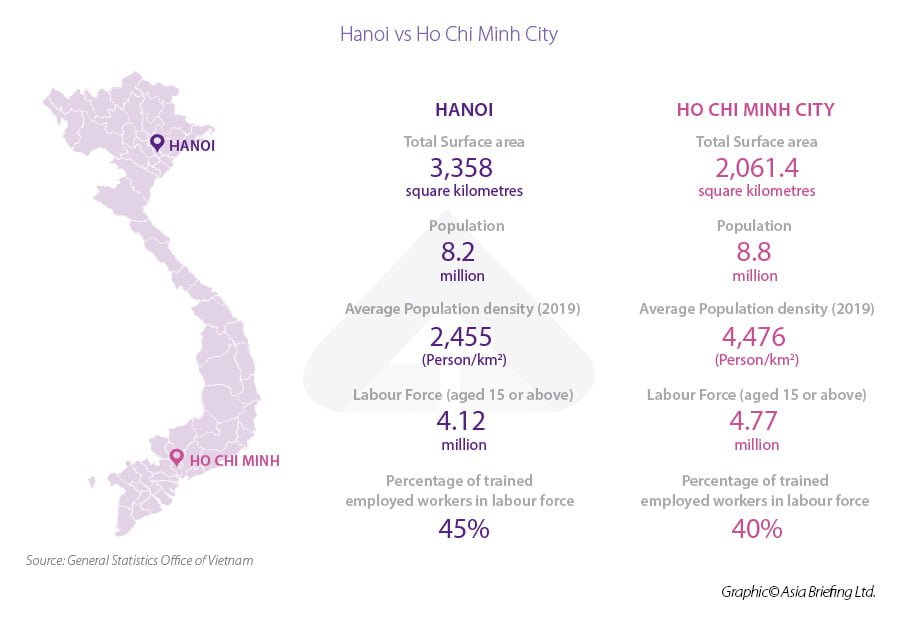
Here are some key aspects of Hanoi’s economy:
- Services Sector: The services sector is a significant contributor to Hanoi’s economy. The city is home to a wide range of service industries, such as finance, banking, insurance, real estate, retail, hospitality, and telecommunications. Hanoi’s bustling markets, shopping centers, restaurants, and hotels cater to both local residents and tourists.
- Manufacturing and Industrial Activities: Hanoi has a growing manufacturing sector, with industries involved in electronics, information technology, textiles and garments, machinery, and automotive parts. The city houses industrial parks and zones where companies set up their production facilities. These industries contribute to job creation and export-oriented activities.
- Tourism: Hanoi is a popular tourist destination, attracting visitors from around the world. The city offers a rich cultural heritage, historical sites, vibrant street life, and traditional arts. Tourists flock to attractions such as Hoan Kiem Lake, the Temple of Literature, the Old Quarter, and numerous museums and pagodas. The tourism industry plays a significant role in Hanoi’s economy, generating revenue and employment opportunities.
- Agriculture: Although Hanoi is predominantly urbanized, agriculture still plays a role in the city’s economy. The surrounding rural districts produce agricultural products such as rice, vegetables, fruits, and livestock. Hanoi’s agriculture contributes to the domestic food supply and supports the livelihoods of rural communities.
- Innovation and Technology: Hanoi is emerging as a center for innovation and technology. The city promotes the development of startups, research and development, and information technology. Hanoi hosts technology parks and incubators that support entrepreneurial activities and foster innovation in sectors such as software development, digital services, and e-commerce.
- Financial and Business Services: Hanoi serves as a financial hub, housing the headquarters of major banks, financial institutions, and investment firms. The city provides a conducive environment for business activities, with a range of professional services including legal, accounting, consulting, and logistics.
- Infrastructure Development: Hanoi’s economy benefits from ongoing infrastructure development projects. These include the expansion of transportation networks, such as highways, railways, and airports, to improve connectivity within the city and with other regions. Infrastructure development supports economic growth and attracts investment.
It’s important to note that economic conditions can change over time, and the information provided here is based on the knowledge available up to September 2021. For the most up-to-date and detailed information on Hanoi’s economy, it is advisable to refer to official sources, economic reports, and data from relevant government agencies.
Tourism Hanoi Update 07/15/2025
Hanoi is a popular tourist destination that offers a blend of rich history, cultural heritage, and vibrant city life. The city attracts visitors from around the world who come to explore its landmarks, experience its traditional charm, and immerse themselves in its unique atmosphere.
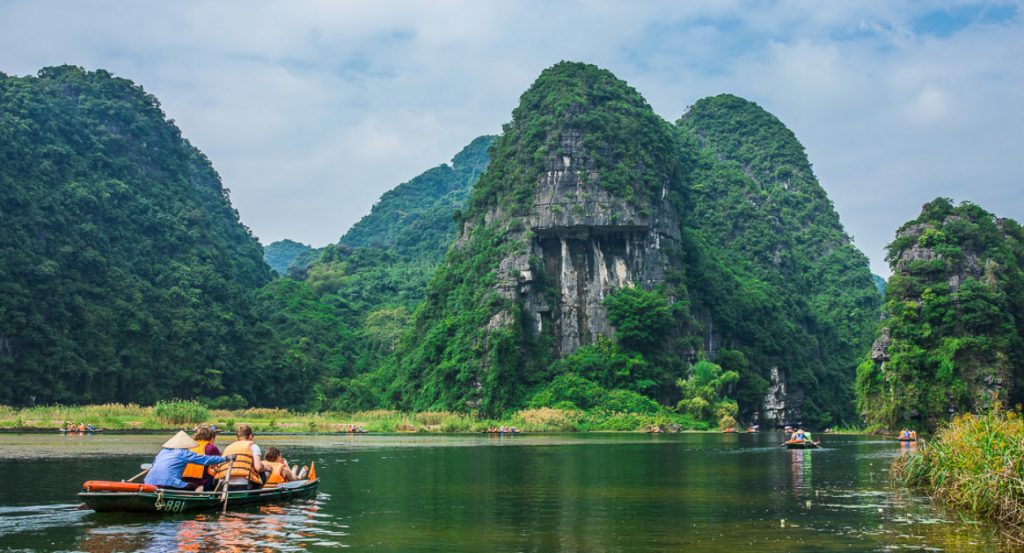
Here are some key highlights of tourism in Hanoi:
- Historical and Cultural Attractions: Hanoi is known for its historical and cultural sites that reflect its long-standing history and heritage. The Old Quarter, with its narrow streets and traditional architecture, is a must-visit area where visitors can wander through bustling markets and ancient temples. The Temple of Literature, a renowned Confucian temple and the country’s first national university, showcases Vietnam’s scholarly past. Other significant attractions include the Ho Chi Minh Mausoleum, One Pillar Pagoda, and the Imperial Citadel of Thang Long.
- Scenic Lakes and Parks: Hanoi is dotted with beautiful lakes and parks that provide a serene escape from the bustling city. Hoan Kiem Lake, located in the heart of Hanoi, is a popular spot for locals and tourists alike. Visitors can take a stroll along the lake’s promenade, visit Ngoc Son Temple situated on a small island, or simply relax and enjoy the scenery. West Lake (Ho Tay) and its surrounding area offer scenic views, recreational activities, and lakeside dining options.
- Traditional Water Puppetry: Hanoi is famous for its traditional water puppetry, a unique art form that originated in the Red River Delta. Visitors can enjoy captivating performances where wooden puppets are skillfully manipulated on water, accompanied by live music and storytelling. The Thang Long Water Puppet Theatre in Hanoi is a popular venue to witness this traditional art form.
- Delicious Cuisine: Hanoi’s culinary scene is renowned for its flavorful and diverse dishes. The city is known for iconic dishes such as pho (noodle soup), bun cha (grilled pork with noodles), banh mi (Vietnamese sandwich), and egg coffee. Exploring Hanoi’s street food culture and dining at local markets or small eateries is a highlight for many visitors.
- Street Life and Night Markets: Hanoi’s streets are vibrant and bustling, offering a lively atmosphere day and night. The city comes alive in the evening with night markets such as the famous Dong Xuan Market and the weekend night market in the Old Quarter. These markets offer a wide range of goods, including local handicrafts, clothing, souvenirs, and street food.
- Cultural Festivals: Hanoi hosts various cultural festivals throughout the year, providing visitors with the opportunity to witness traditional performances, colorful parades, and cultural activities. The Lunar New Year (Tet) celebration, which usually falls between late January and early February, is a vibrant time to experience Hanoi’s festive spirit.
- Day Trips and Excursions: Hanoi serves as a gateway to explore the surrounding areas and natural wonders of northern Vietnam. Popular day trips from Hanoi include visiting the UNESCO World Heritage Site of Halong Bay, the ancient town of Hoa Lu and the picturesque landscapes of Ninh Binh, and the mountainous region of Sapa with its ethnic minority communities.
Hanoi’s tourism industry continues to grow, with accommodations ranging from budget hostels to luxury hotels and a wide range of cultural and entertainment offerings to cater to diverse interests. It’s advisable to check the latest travel information, consult reputable tourist agencies, and plan accordingly to make the most of a visit to Hanoi.
- Museums and Galleries: Hanoi is home to numerous museums and art galleries that showcase the country’s history, art, and culture. The Vietnam National Museum of History, the Vietnam Museum of Ethnology, and the Vietnam Fine Arts Museum are notable institutions that provide insights into the country’s rich heritage and contemporary art scene.
- Traditional Handicrafts: Hanoi is known for its traditional handicrafts, and visiting craft villages in and around the city offers a chance to witness the skilled craftsmanship of local artisans. Bat Trang Ceramic Village, famous for its pottery, and Van Phuc Silk Village, known for its silk production, are popular destinations for those interested in traditional Vietnamese crafts.
- French Colonial Influence: Hanoi bears the imprint of its French colonial past, evident in its architecture and wide boulevards. The French Quarter showcases elegant colonial buildings, including the iconic Hanoi Opera House and the St. Joseph’s Cathedral, which add a unique charm to the cityscape.
- Cultural Performances: Hanoi offers a range of cultural performances that allow visitors to experience traditional music, dance, and theater. The Hanoi Opera House hosts opera, ballet, and classical music performances, while the Thang Long Water Puppet Theatre presents captivating water puppet shows.
- Shopping: Hanoi provides ample opportunities for shopping enthusiasts. The city is known for its traditional handicrafts, lacquerware, silk products, and local souvenirs. Markets like Dong Xuan Market, Night Market, and the weekend market at the Old Quarter offer a vibrant shopping experience.
- Cyclo Tours: Taking a cyclo (three-wheeled bicycle taxi) ride is a popular way to explore the streets of Hanoi. It offers a leisurely pace, allowing visitors to soak in the city’s atmosphere while traversing its narrow alleys and busy roads.
- Seasonal Festivals: Hanoi hosts various cultural and religious festivals throughout the year. These include the Mid-Autumn Festival, which celebrates the harvest season with lantern displays and traditional performances, and the Perfume Pagoda Festival, a pilgrimage to the Perfume Pagoda in the nearby Huong Son Mountains.
- Tranquil Temples and Pagodas: Hanoi is home to several temples and pagodas where visitors can find tranquility and spiritual solace. The Tran Quoc Pagoda, situated on an islet in West Lake, and the One Pillar Pagoda, an iconic Buddhist temple, are popular places of worship and sightseeing.
- Cycling and Walking Tours: Exploring Hanoi by bicycle or on foot allows visitors to get a closer look at the city’s hidden gems, architectural details, and local neighborhoods. Many tour operators offer guided cycling and walking tours that take visitors off the beaten path.
Hanoi’s tourism industry continues to evolve, offering a blend of traditional charm and modern attractions. Visitors can experience the city’s rich history, cultural diversity, and culinary delights, making it a captivating destination for travelers seeking an authentic Vietnamese experience.
Cuisine Hanoi Update 07/15/2025
Hanoi is renowned for its vibrant culinary scene, offering a wide range of delectable dishes that showcase the flavors and techniques of Vietnamese cuisine. Here are some highlights of Hanoi’s cuisine:
- Pho: Pho is perhaps the most famous Vietnamese dish, and Hanoi is the birthplace of this iconic noodle soup. It consists of a flavorful broth, flat rice noodles, and thinly sliced beef or chicken, garnished with fresh herbs, bean sprouts, and lime. Enjoying a steaming bowl of pho is a must-do culinary experience in Hanoi.
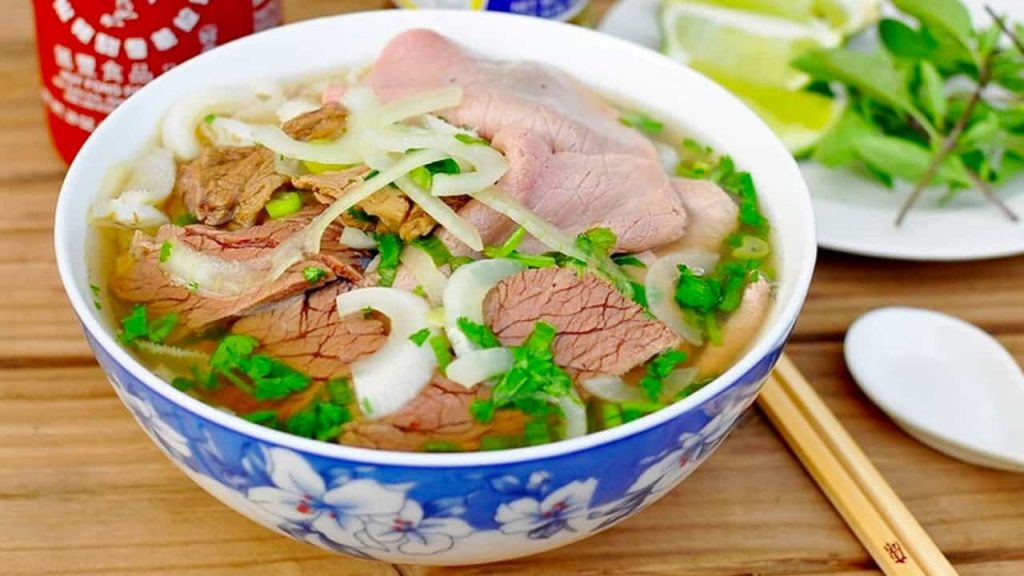
- Bun Cha: Another Hanoi specialty is Bun Cha, which features grilled pork patties served with vermicelli noodles, fresh herbs, and a sweet and tangy dipping sauce. It is often accompanied by a side of spring rolls (Nem) and is a favorite among locals and visitors alike.
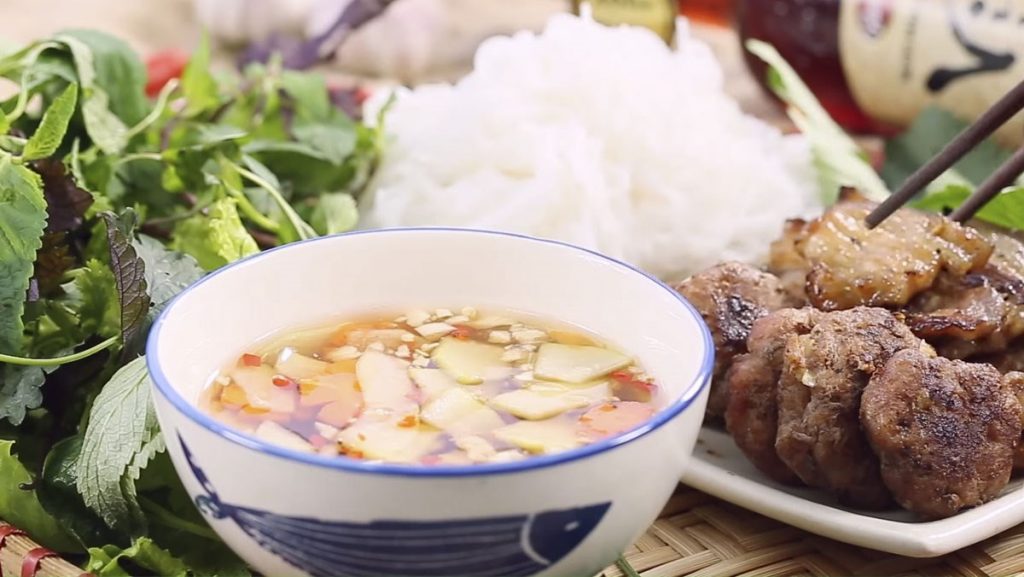
- Cha Ca: Cha Ca is a unique Hanoi dish that consists of marinated and grilled fish, usually catfish, served with herbs, rice noodles, peanuts, and shrimp paste. The dish is typically cooked tableside on a small charcoal stove, creating an interactive dining experience.
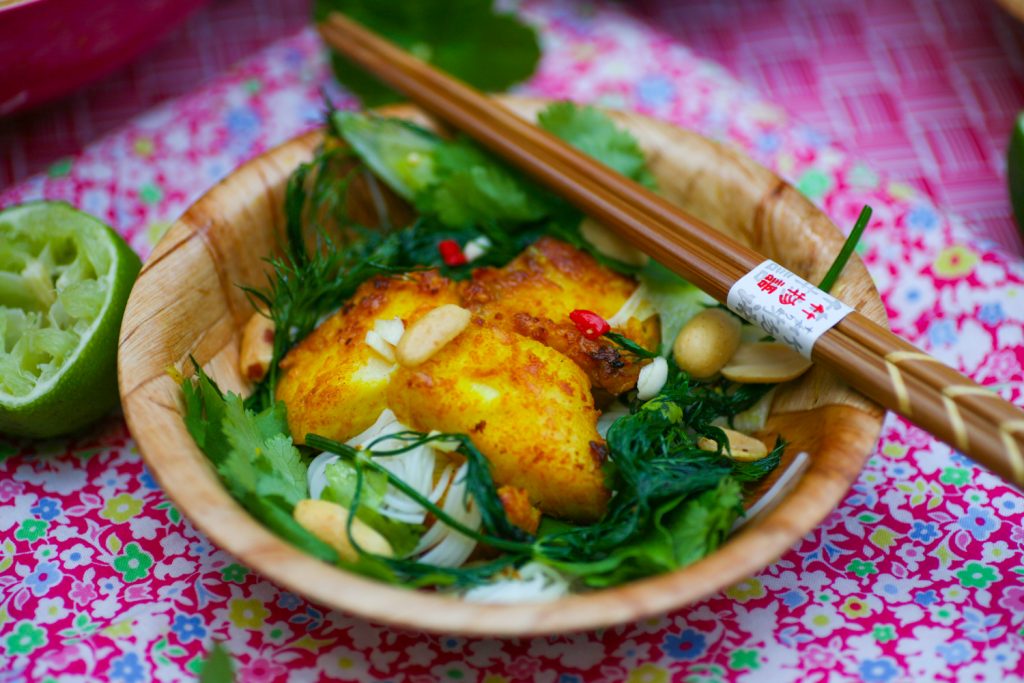
- Banh Mi: Hanoi’s version of the Banh Mi, a Vietnamese sandwich, is a must-try street food. It features a crusty baguette filled with a variety of ingredients such as pate, cold cuts, grilled meats, pickled vegetables, and fresh herbs. The combination of flavors and textures makes it a delicious and satisfying snack.
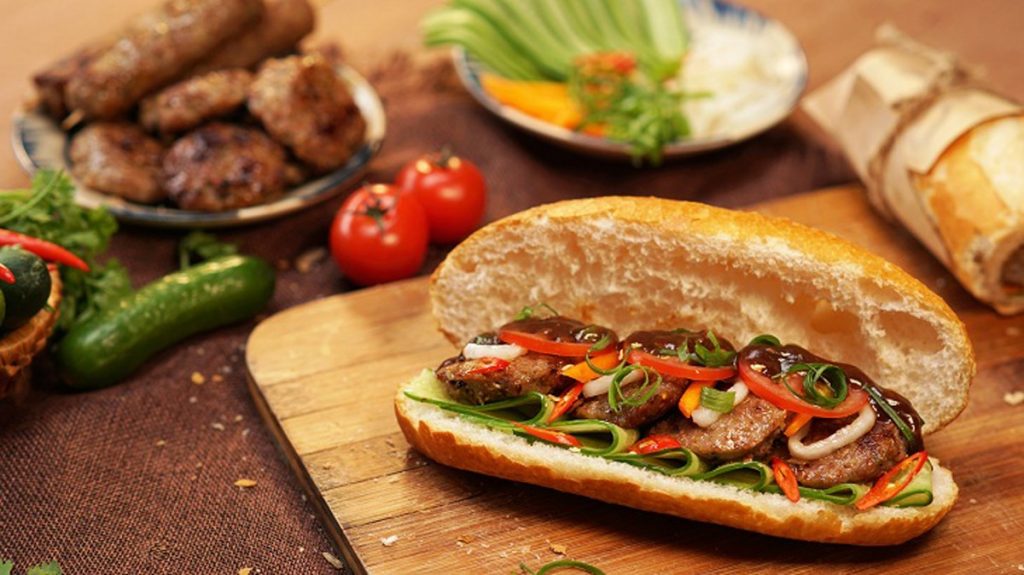
- Egg Coffee: Hanoi is famous for its unique Egg Coffee (Ca Phe Trung), a rich and velvety drink made with egg yolks, condensed milk, and robust Vietnamese coffee. This specialty beverage is a sweet treat that provides a delightful balance of flavors.

- Cha Ca La Vong: Cha Ca La Vong is a Hanoi classic that showcases turmeric-marinated fish, typically served with dill, peanuts, vermicelli noodles, and shrimp paste. This dish is named after the street in the Old Quarter where it originated and has become a staple of Hanoi’s culinary heritage.
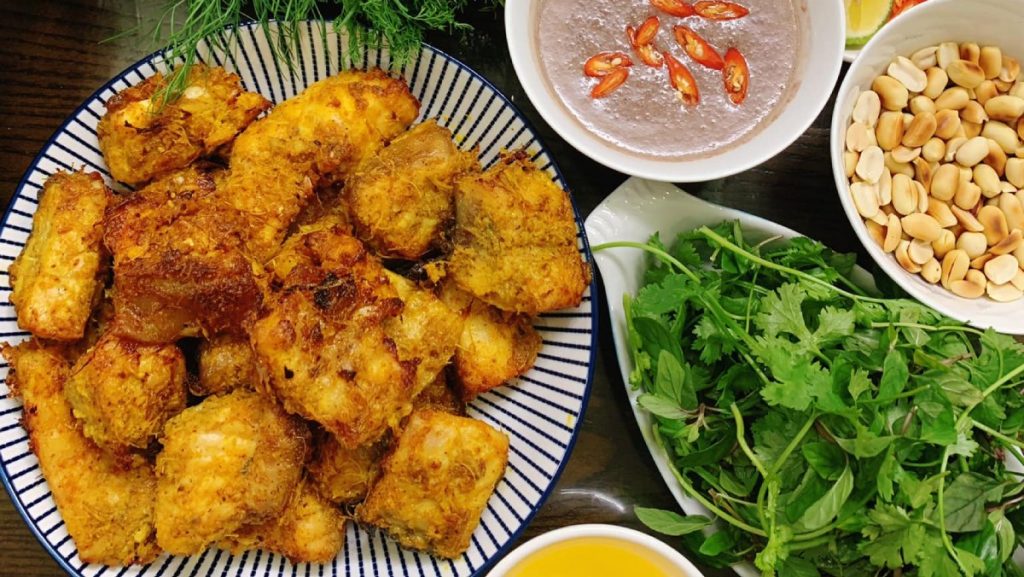
- Xoi: Xoi is sticky rice cooked with various ingredients and served as a savory or sweet dish. In Hanoi, you can find Xoi Xeo, which is sticky rice with mung bean paste, fried shallots, and a drizzle of savory sauce. Xoi is a popular breakfast or snack option among locals.
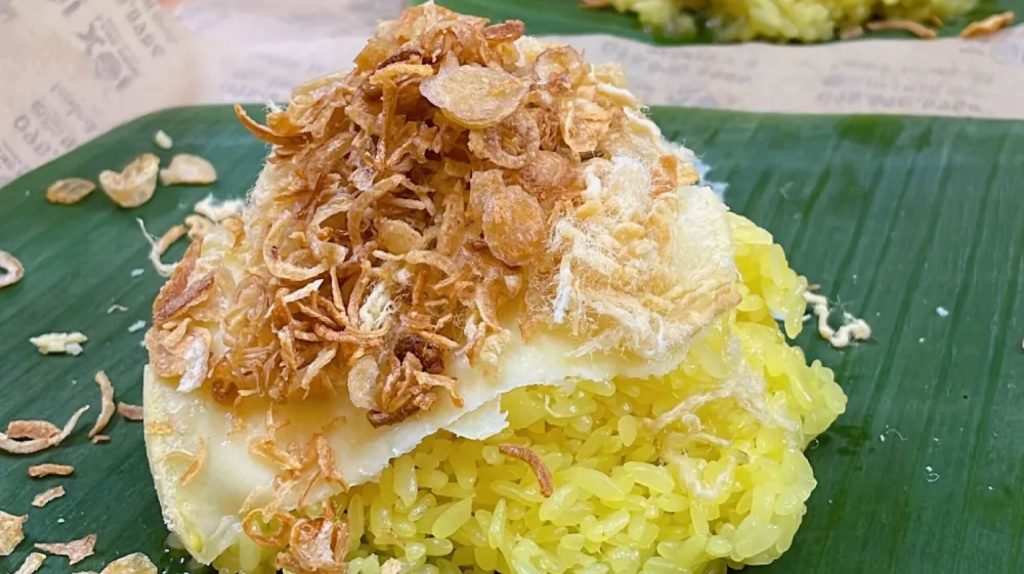
- Nem Ran: Hanoi’s version of Vietnamese spring rolls, known as Nem Ran or Cha Gio, features a crispy outer shell filled with a mixture of ground pork, vegetables, and noodles. These golden delights are often served with fresh herbs and a dipping sauce.
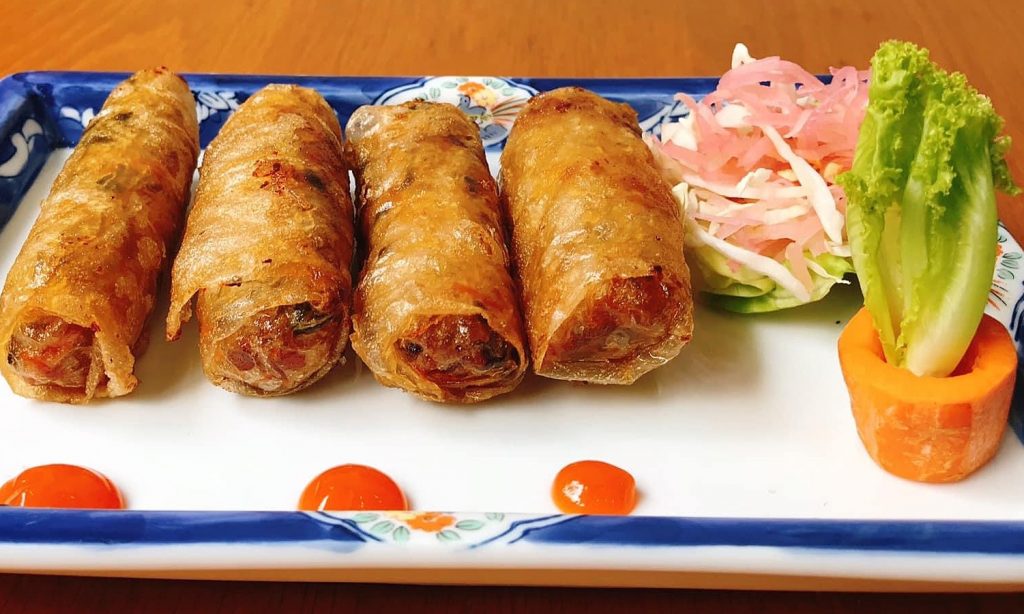
- Pho Cuon: Pho Cuon is a unique dish that consists of fresh rice noodle sheets wrapped around beef slices, herbs, and lettuce. It is served with a dipping sauce and offers a different way to enjoy the flavors of pho.
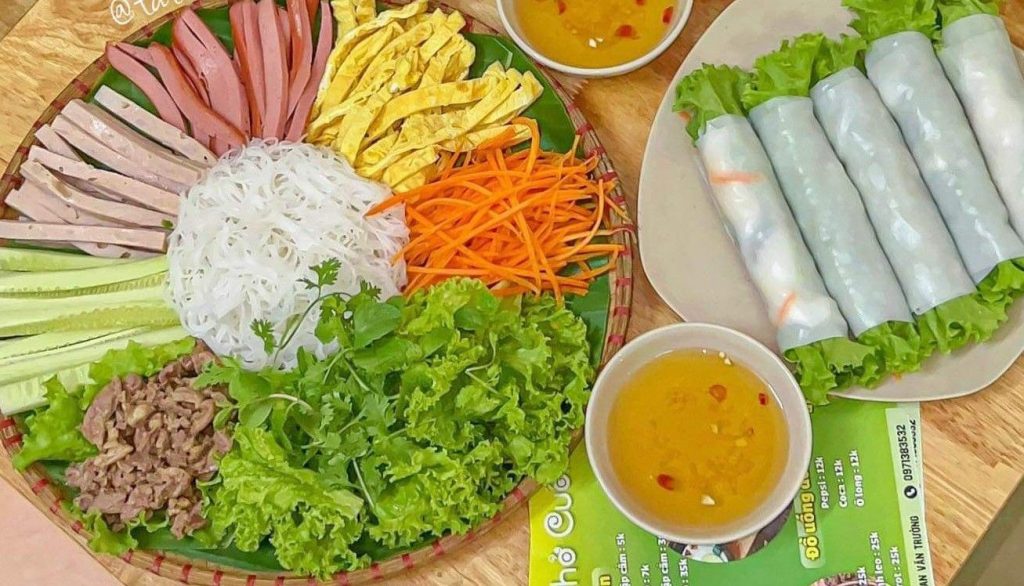
- Che: Che is a popular Vietnamese dessert, and Hanoi offers a wide variety of these sweet treats. Che Ba Mau, a three-color dessert made with mung beans, black-eyed peas, coconut milk, and jelly, is a favorite among locals.
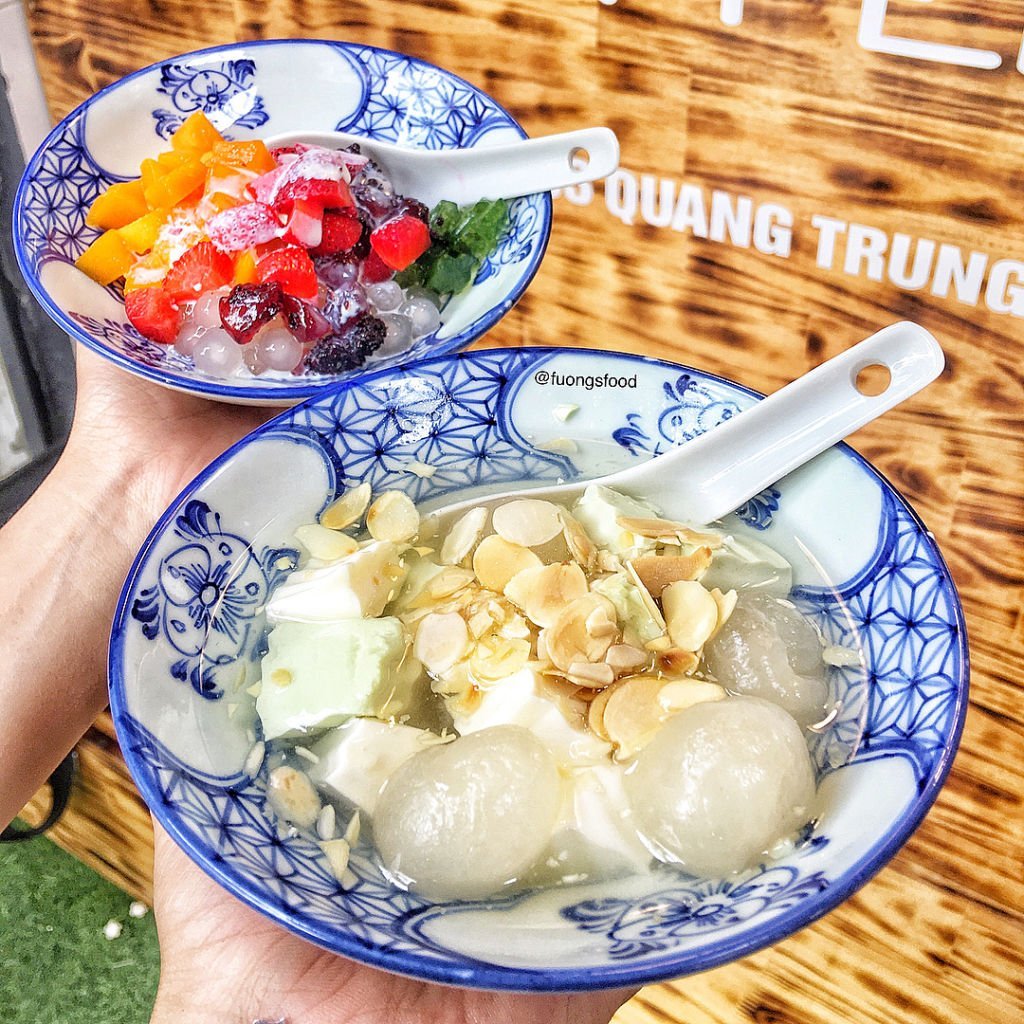
These are just a few highlights of Hanoi’s cuisine. Exploring the city’s street food stalls, local markets, and traditional eateries will provide an opportunity to savor the authentic flavors and culinary delights that Hanoi has to offer.
Transportation Update 07/15/2025
Hanoi offers a variety of transportation options to navigate the city and its surrounding areas. Here are some common modes of transportation in Hanoi:
- Taxis: Taxis are widely available in Hanoi, and they provide a convenient and comfortable way to travel around the city. You can easily hail a taxi on the street or find them at designated taxi stands. It’s recommended to choose reputable taxi companies and ensure that the meter is used to avoid any misunderstandings.
- Motorbike Taxis (Xe Om): Xe Om is a popular mode of transportation in Hanoi, especially for short distances. Motorbike taxis can be found throughout the city, and drivers usually wear identifiable vests. Negotiate the price before the ride, as they usually do not have meters.
- Ride-Hailing Services: Hanoi has several ride-hailing services like Grab and GoViet, which provide convenient and reliable transportation. These services allow you to book a car or motorbike taxi using a mobile app, providing upfront pricing and convenient payment options.
- Public Buses: Hanoi has an extensive public bus network that covers various routes within the city. Buses are an affordable mode of transportation, but they can be crowded and the routes might be confusing for tourists. It’s advisable to have the exact change ready or purchase a reloadable bus card.
- Cyclos: Cyclos are three-wheeled bicycle taxis that offer a leisurely way to explore Hanoi’s streets, especially in the Old Quarter. Cyclo drivers navigate through narrow lanes, allowing you to experience the charm of the city at a slower pace. Negotiate the fare before the ride.
- Electric Cars: In some areas of Hanoi, you can find electric cars that offer guided tours or transportation services. These small vehicles are a convenient way to explore popular tourist areas or get around the city center.
- Rental Bikes: Renting a bicycle is a popular option for exploring Hanoi, particularly in the Old Quarter and around Hoan Kiem Lake. Many rental shops offer bicycles for hourly or daily rates, allowing you to navigate the city at your own pace. However, be cautious of the traffic and follow local road rules.
- Walking: Hanoi’s compact size and numerous pedestrian-friendly areas make walking a viable option for short distances. Exploring the Old Quarter and nearby attractions on foot allows you to soak in the city’s atmosphere, discover hidden gems, and interact with the locals.
- Trains: Hanoi is well-connected to other parts of Vietnam by train. The city has several train stations, including Hanoi Railway Station and Gia Lam Railway Station, which provide services to destinations like Ho Chi Minh City, Hue, and Sapa.
- Long-Distance Buses: If you plan to travel outside of Hanoi, long-distance buses are a common mode of transportation. Several bus stations in Hanoi offer routes to various destinations across Vietnam.
It’s worth noting that traffic in Hanoi can be busy and chaotic, particularly during peak hours. Exercise caution when crossing roads, and it’s advisable to use pedestrian crossings where available. Additionally, be mindful of your belongings and take necessary precautions to ensure a safe and hassle-free travel experience in Hanoi.

